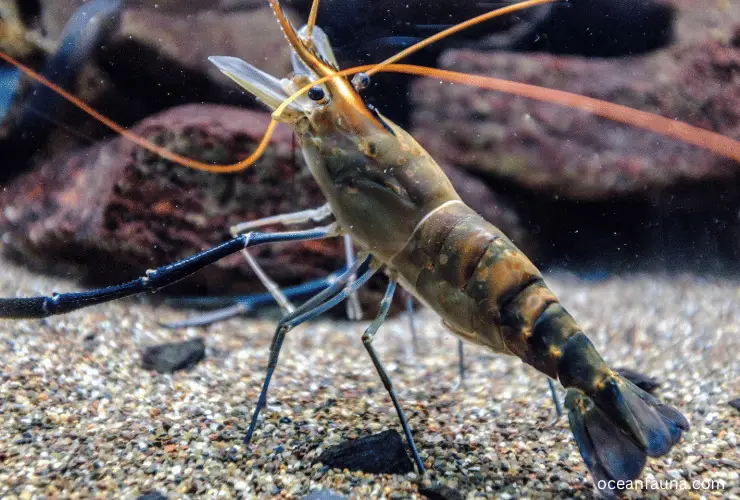The underwater living creatures are truly unique. Be it little isopods or gigantic oarfish, everyone has unique characteristics that help them to thrive in this unconditional and unfavourable environment. And just like them, shrimp has unique features that set them apart from other fishes.
And talking about shrimp anatomy and characteristics, a lot of people keep asking, do shrimp have fins?
The short answer to this question is no, shrimp do not have fins. In fact, fins are a characteristic feature of fish, and shrimp belong to a different category of marine life known as crustaceans. Instead of fins, shrimp have specialized fairy appendage-like organs called swimmerets that help them to move and swim in the water.
Despite having no fins, how do shrimp swim? How do shrimp live in unfavourable conditions underwater and move swiftly? Well, if you’re also wondering the same, this guide will be helpful to you.
Keep reading and find out whether shrimp have fins or not. Also, learn how they move and live in unfavourable conditions.
Do Shrimp Have Fins?
Shrimp belong to the crustacean family. Although they live underwater and are often considered the same as fish, they belong to a different group than fishes. And the reason is due to their body structure and characteristics.
Like fishes, shrimp don’t have visible fins in their bodies. So, the question is, how do they swim and move in the water then?
Although fins are missing in their body, they have several other unique adaptations that help them move through the water and survive in their environment.
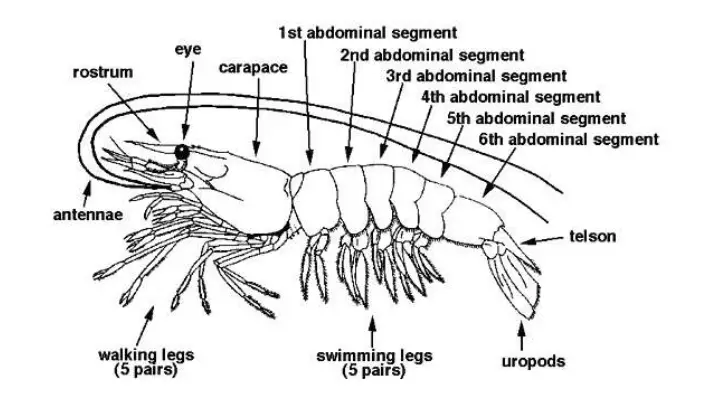
One of these adaptations is their streamlined body shape. Shrimp have a slender, curved bodies designed to reduce drag and allow them to swim efficiently through the water. Their tails, or abdomens, are also very flexible, allowing them to make sudden changes in direction and swim backward if needed.
Another unique adaptation of shrimp is their ability to move quickly and escape
predators. Shrimp have a powerful tail muscle known as the telson, which generates rapid bursts of speed. When threatened, shrimp can rapidly contract their telson muscles, propelling themselves away from danger and towards safety.
In conclusion, shrimp do not have fins. Instead, they have several unique features that allow them to move through the water and survive in their environment. These include their streamlined body shape, flexible tails, swimmerets, and powerful tail muscle.
How Do Shrimp Swim Without Fins?
Shrimp are known for their unique swimming motion, which differs from the traditional way fish swim.
According to various sources, shrimp do not have fins like fish. However, they can still move around in the water with relative ease.
Shrimp swim by rapidly pulling their abdomen toward their carapace, the hard upper shell on their backs. This motion propels them through the water but also means that shrimp swim backward.
In addition to their streamlined body shape, shrimp also have several appendages that help them move through the water. These include their legs, which are used for walking on the seafloor, and their swimmerets, which are small, leg-like structures on their abdomen. The swimmerets are used for swimming, with the shrimp rapidly moving back and forth to propel themselves through the water.
Overall, shrimp are unique creatures that can swim without traditional fins. Their swimming motion is produced by the flexing of their abdomen, modified appendages, and the movement of their antennae.
The shape and movement of their antennae play a crucial role in navigating their surroundings.
Purpose of Swimmerets (Instead of Fins) in Shrimp
Although shrimp don’t have regular fins like other fishes, they have different organs that function or act as fins. These organs help shrimp to swim and move through water swiftly.
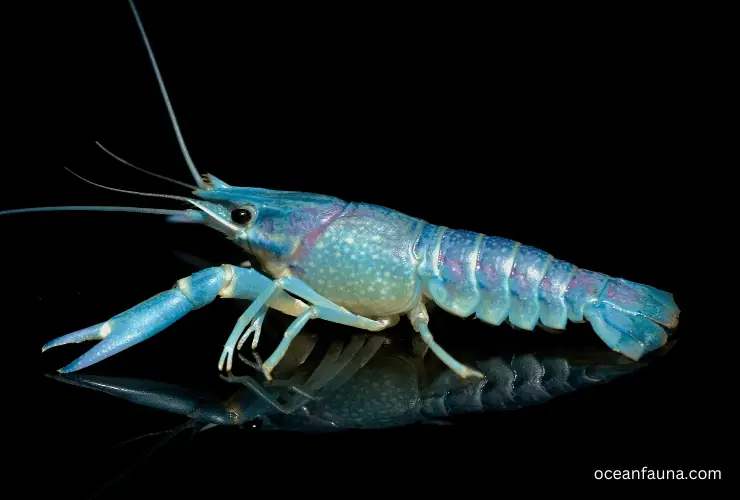
Unlike other fishes, shrimp use swimmerets for swimming. These are considered fins in shrimp. These swimmerets and the related organs have different purposes in shrimp bodies. They are:
The shrimp fins are important in locomotion, maneuverability, and survival.
Here are some of the purposes of fins in shrimp:
Swimming
The primary purpose of fins in shrimp is to help them swim. Shrimp use their abdominal and tail fins to move through the water and change direction quickly.
Stability
Fins also provide stability to the shrimp as it moves through the water. The dorsal and ventral fins help to keep the shrimp upright and prevent it from rolling over.
Braking
Shrimp use their fins to brake and slow down. When swimming at high speeds, the shrimp can extend its pereiopods and use its pleopods to slow down.
Defence
Shrimp also use their fins for defence. When threatened, the shrimp can extend its fins to make itself appear larger and more intimidating to predators.
Communication
Some species of shrimp use their fins to communicate with each other. For example, the snapping shrimp uses its large claw to create a loud snapping sound that can stun prey and communicate with other shrimp.
Overall, the shrimp fins play a critical role in its survival and help to move through the water.
Comparing Shrimp Fins (Swimmerets) with Fish Fins
While shrimp and fish are both aquatic animals that use fins to move through the water, their fins have some significant differences.
Fish fins have evolved to reflect both their lifestyle and evolution, with an amazing array of shapes and forms. Fish use their fins to travel in the water, and they typically have one or two dorsal fins, an anal fin, and pelvic and pectoral fins.
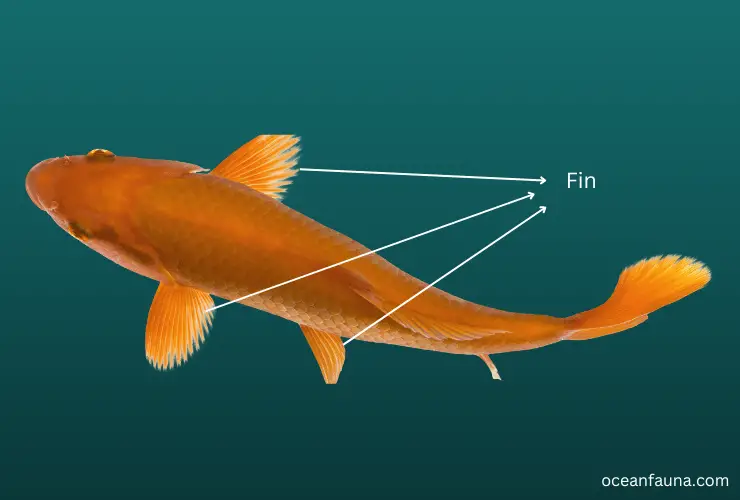
On the other hand, shrimp are invertebrates with an exoskeleton and ten sets of limbs that they use to move around. Shrimp have tail fins for swimming, which help them move through the water like fish.
However, shrimp fins are not as complex as fish fins and do not serve the same purpose. While fish use their fins for propulsion, maneuvering, and balance, shrimp primarily rely on their legs for movement
Here are some of the ways that shrimp fins differ from fish fins:
| Criteria | Fish | Shrimp |
| Structure | Fish fins are generally more rigid and have more bony support structures than shrimp fins | Shrimp fins are softer and more flexible, allowing for greater maneuverability |
| Placement | Fish fins are typically located along the dorsal, ventral, and lateral sides of the body | shrimp fins are primarily located on the underside of the body |
| Function | Fish fins are used for a variety of functions, including swimming, stability, and steering | Shrimp fins are primarily used for swimming and maneuvering. |
| Size | Fish fins are generally larger in size | Shrimp Fins are smaller compared to fish fins |
| Number | Fish typically have more fins than shrimp. For example, most fish have a dorsal fin, anal fin, caudal fin, and pelvic fins | Shrimp generally only have abdominal and tail fins (swimmerets) |
Shrimp Swim Backward
The shrimp lifestyle is full of amazing and unique characteristics. As you’ve read this far, you already know that shrimp have no fins and stills. They can swim through water.
And what if there are more amazing fats than this? Surprised, right?
Well, despite having no fins, shrimp can swim easily. An even more interesting fact is that shrimp move backward! Yes, you heard it right!
Reasons Why Shrimp Move Backward
Shrimp are known to move backward. The backward motion is due to the shrimp’s body configuration and the way they swim by rapidly flexing their abdomen towards their carapaces. This motion propels shrimp through the water, but it also means that shrimp swim backward.
In addition, the uropods on the shrimp allow them to swim backward and function like rudders, steering the shrimp when they swim forward. When alarmed, a shrimp can flex its tail fan rapidly, resulting in a backward dart called the caridoid escape reaction (lobstering).
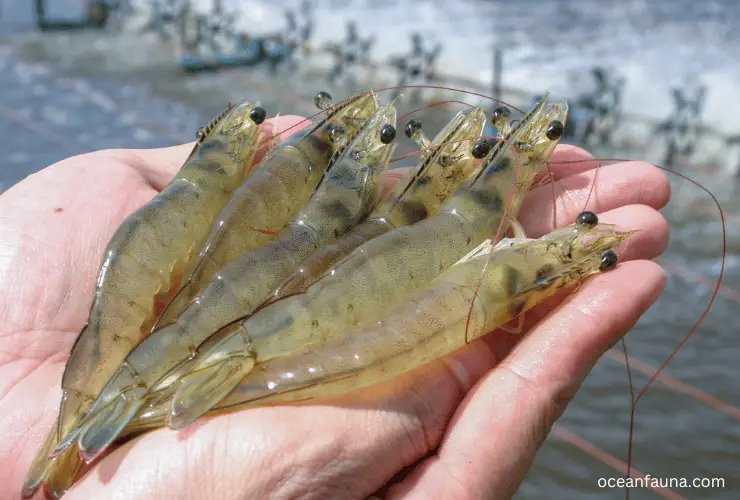
Furthermore, shrimp swim forward normally but swim backward when feeling threatened.
Shrimp can swim both forwards and backward, and they do so for a variety of reasons.
Here are some of the reasons why shrimp may swim backward:
Escaping Danger
Shrimp are preyed upon by many larger animals, so they may swim backward to quickly escape from a predator. Swimming backward allows them to keep their eyes on the predator and move away quickly.
Moving Through Currents
Shrimp may swim backward to move through strong currents, such as those found near the ocean floor. This allows them to maintain their position and not get swept away.
Feeding
Shrimp are scavengers and feed on small organisms on the ocean floor. Swimming backward allows them to move through their environment more efficiently and search for food.
Mating behavior
During mating, male shrimp may swim backward in front of the female to display their dominance and attract her attention.
In summary, shrimp move backward for various reasons, including their body configuration, the way they swim, and when they feel threatened. Swimming backward is just one of the many ways that shrimp can move in their aquatic environment.
FAQ
Do shrimp have fins or swimmerets?
Ans: Shrimp have swimmerets, appendages on the underside of their body that are used for swimming. Swimmerets comprise several segments covered in a thin layer of muscle, unlike the fins of fish, which are made of skin and bony rays. However, some sources argue that swimmerets can be considered as fins.
What are the pleopods of a shrimp?
Ans: The pleopods are the small, feathery appendages located on the underside of a shrimp’s body. These appendages are used for swimming, breathing, and reproduction.
Can shrimp swim without fins?
Ans: Yes, shrimp can swim without fins. They are quite adept swimmers and move by flexing the muscles of their bellies and tail. However, their body structure means that they swim backward.
Conclusion
So that’s all. Shrimp don’t have fins like other fishes. Instead, they have special organs to serve the same purpose.
In conclusion, while shrimp may not have fins, they have evolved to have specialized appendages called pleopods that allow them to swim and maneuver through the water. These small, feathery structures are essential to the survival of shrimp and other crustaceans and have helped these animals adapt to their aquatic environments over millions of years.
Alongside the specialized appendages, they’ve swimmerets that help them swim and move in the water.

